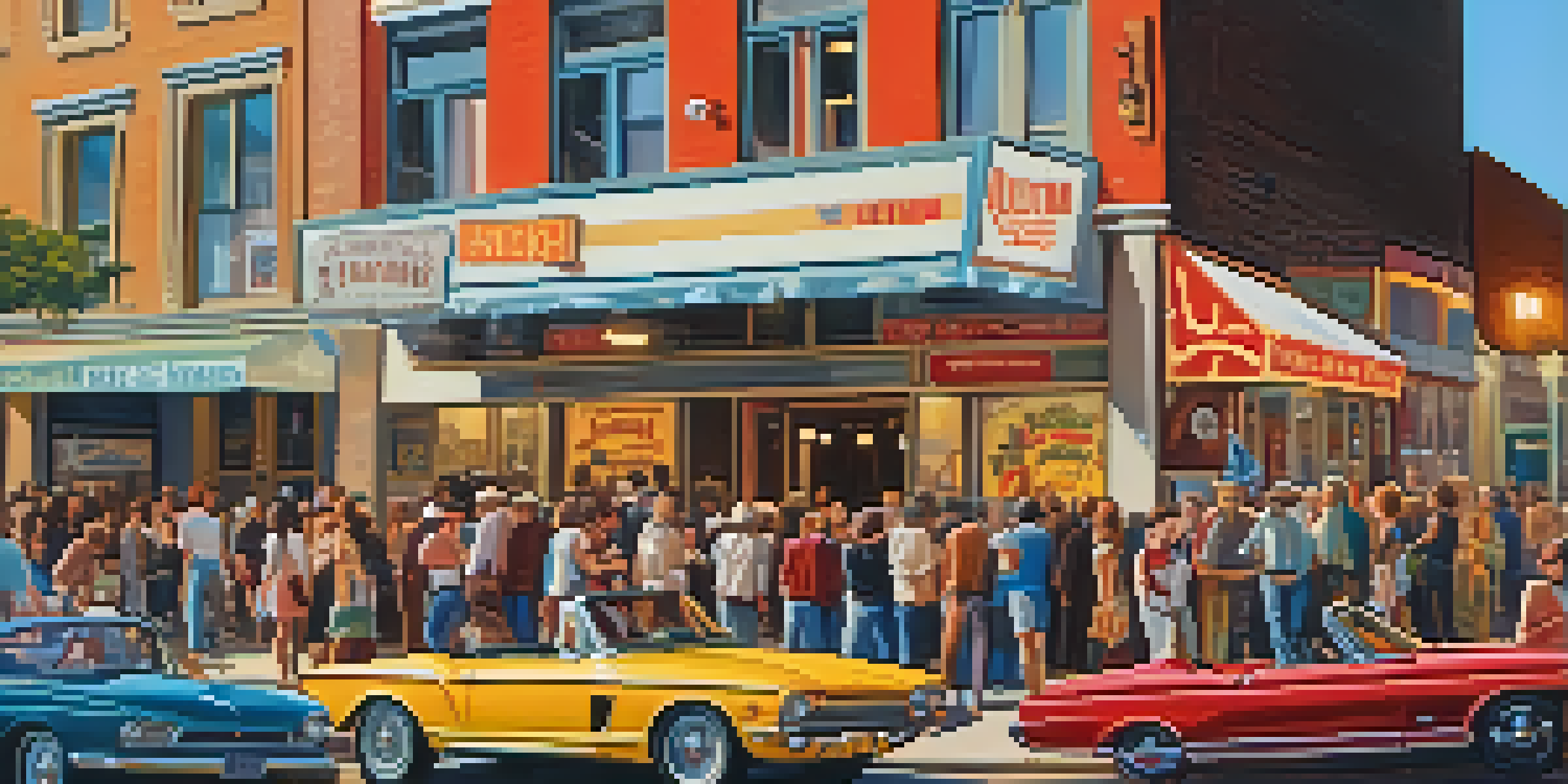The Evolution of Austin's Music Scene Over the Decades

The 1960s: Roots of a Musical Revolution
The 1960s marked a pivotal time for Austin's music, with folk and rock taking center stage. Venues like the famous Threadgill's became hot spots for local and touring artists, fostering a vibrant community. Iconic figures such as Janis Joplin and the 13th Floor Elevators helped put Austin on the map as a hub for musical talent. This era laid the groundwork for a cultural shift that would define the city's identity for decades to come.
The 1970s: The Birth of 'The Live Music Capital of the World'
As the 1970s rolled in, Austin embraced its title as 'The Live Music Capital of the World.' The city saw an explosion of venues and festivals, including the inaugural Austin City Limits concert series. The blend of country, blues, and rock began to attract national attention, pushing local artists into the spotlight. This decade solidified Austin's reputation and showcased its unique musical blend.
Austin's Musical Roots in the 60s
The 1960s established Austin as a musical hub, with folk and rock artists like Janis Joplin shaping the city's identity.
The 1980s: Diversity and New Genres Emerge
The 1980s ushered in an era of musical diversity, with genres like punk and new wave gaining traction. Clubs like the Electric Lounge and the Ritz became key venues for emerging artists, creating a melting pot of sounds. This period also saw the rise of alternative country, thanks to bands like the Flatlanders and Uncle Tupelo. Austin's music scene was no longer just about one genre; it became a tapestry of influences and styles.
The 1990s: Mainstream Success and the Rise of Festivals
In the 1990s, Austin's music scene reached new heights with bands like Spoon and The Black Angels achieving mainstream success. The South by Southwest (SXSW) festival began to attract global attention, showcasing a mix of established and up-and-coming artists. This decade further solidified Austin's status as a launching pad for musicians looking to break into the industry. It was a time of innovation and creativity, with the city's music scene thriving like never before.
Rise of Festivals in the 90s
The 1990s marked a turning point for Austin's music scene, highlighted by the global recognition of the South by Southwest (SXSW) festival.
The 2000s: Technology and the Digital Shift
The 2000s brought technological advancements that changed how music was produced and consumed. Digital platforms allowed artists to share their work with a global audience, while local musicians began leveraging social media for promotion. Austin's venues continued to host a mix of genres, but the focus on digital presence became crucial for success. This decade saw artists adapt to new challenges, blending traditional music with modern tools.
The 2010s: A New Generation of Artists
As we entered the 2010s, a new generation of artists emerged, influenced by the city's rich musical history. Genres like indie, hip-hop, and electronic began to flourish, creating a dynamic landscape. Festivals like ACL and SXSW continued to evolve, drawing talent from around the world and further diversifying the scene. This decade showcased the importance of collaboration and innovation in keeping Austin's music scene vital and exciting.
Resilience in the 2020s
Despite challenges like the pandemic, Austin's music community displayed resilience by supporting local artists through virtual events.
The 2020s: Resilience Amidst Challenges
The 2020s have presented unique challenges for Austin's music scene, especially with the global pandemic. Many venues faced closure, but the community rallied, supporting local artists through virtual performances and fundraisers. As restrictions eased, there was a renewed appreciation for live music, with audiences eager to return to their favorite venues. This resilience highlights the deep connection between Austin's music community and its audience, ensuring that the scene will continue to thrive.
Looking Ahead: The Future of Austin's Music Scene
Looking ahead, Austin's music scene is poised for continued evolution, blending past influences with future innovations. With emerging technologies and new genres on the rise, the city remains a fertile ground for creativity. Local artists are increasingly drawing inspiration from global sounds, while still honoring their roots. The future of Austin's music scene is bright, promising to keep the city's spirit alive through the power of music.
Austin's Musical Evolution
From folk and rock in the 1960s to a diverse tapestry of genres today, Austin's music scene has continuously evolved, reflecting its rich cultural history.